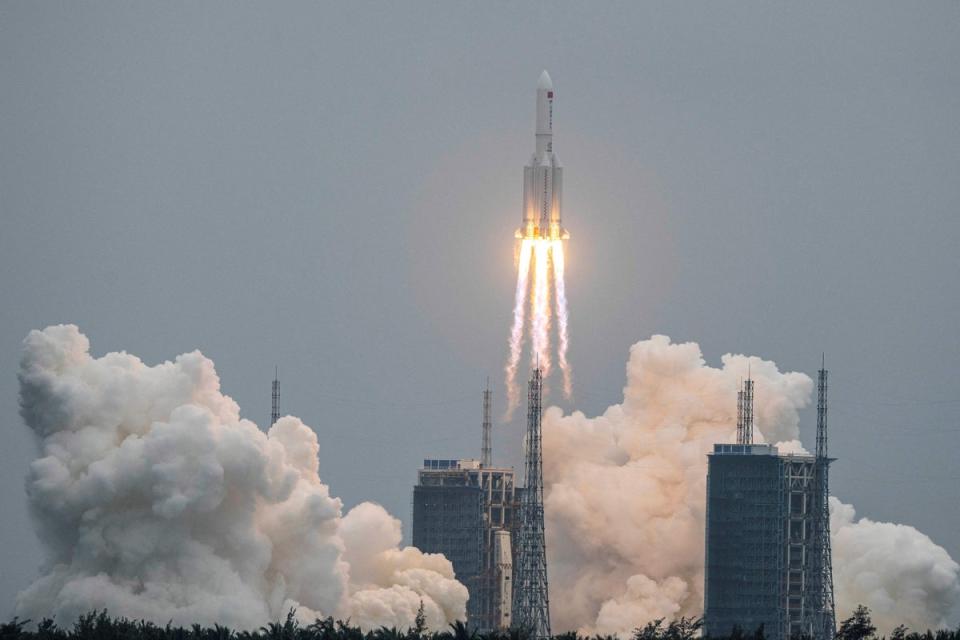Chinese out-of-control rocket will crash to Earth soon, experts predict

A Chinese rocket hurtling uncontrollably around the planet will likely crash to Earth at the end of the month.
The 21-ton Long March 5B rocket stage was left as a part of the Wentian space station module, which was launched on Sunday and docked with the Tiangong space station.
Using data from the US Space Force’s Space Surveillance Network, the Aerospace Corporation’s Center for Orbital Reentry and Debris Studies (CORDS) have tracked the debris and made a prediction that it will reenter the atmosphere at approximately 7:30am GMT on 31 July – or 22 hours before or after that time.
The prediction will be updated as time goes on, and the researchers have emphasised that it is too early to say exactly where the rocket will fall.
Legend for reentry prediction map ⬇️ pic.twitter.com/XSX9n5LE3u
— The Aerospace Corporation (@AerospaceCorp) July 26, 2022
“The general rule of thumb is that 20–40 per cent of the mass of a large object will reach the ground, but the exact number depends on the design of the object. In this case, we would expect about five to nine metric tons”, they wrote.
“Generally, for an upper stage, we see small and medium tanks survive more or less intact, and large engine components. The large tanks and the skin of this core stage are likely to come apart. We will also see lightweight items such as insulation fall out. The melting point of the materials used will make a difference in what remains.”
This is the third time that China has left a rocket to descent uncontrolled to Earth. In May last year, a rocket that carried a central part of the Tianhe space station module shot around the Earth so quickly that it was impossible to say where it would land. The debris circled the Earth once every 90 minutes.
If the rocket had re-entered the atmosphere above a populated area, the result would have been akin to a small plane crash scattered over 100 miles. The year before, a similar prototype craft came within 13 minutes of hitting New York City.
“As the number of satellites grows rapidly, reentries overall will also likely increase in frequency. One of the best ways to control the growth of orbital debris is to get the satellites out of orbit at end-of-life. This is often done through reentry”, CORDS says.
“In most of these cases, the satellites are small. Some are even designed to have very little mass survive to the ground. Larger objects like the CZ-5B rocket body don’t easily burn up. It is a common practice for larger objects such as rockets to perform a controlled reentry — using their engines to target an isolated region of the ocean to reenter, making the risk to people extremely small.”

 Yahoo Finance
Yahoo Finance 